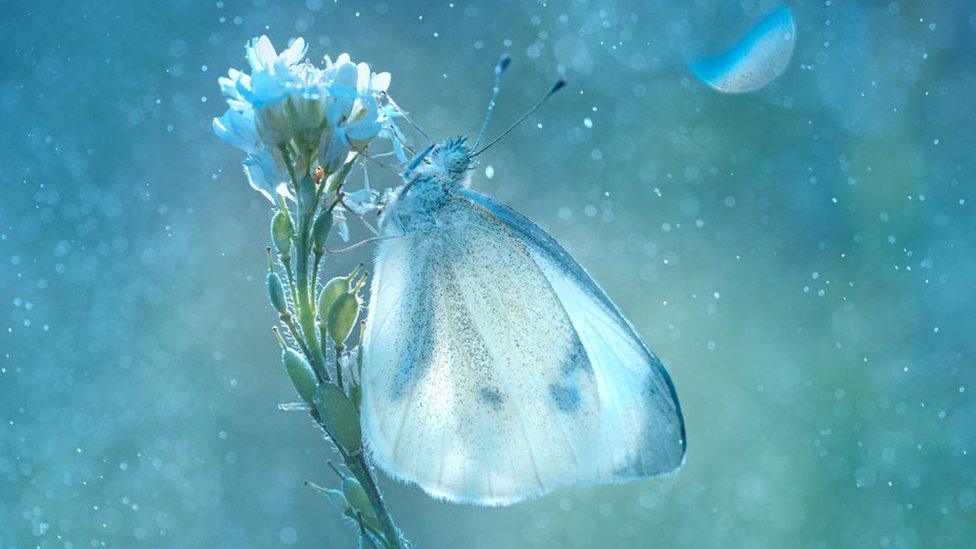Focus on female farmers in Northumberland and the Scottish Borders
- Published
Award-winning documentary photographer Joanne Coates has created an exhibition featuring portraits of women in agriculture across Northumberland and the Scottish Borders.
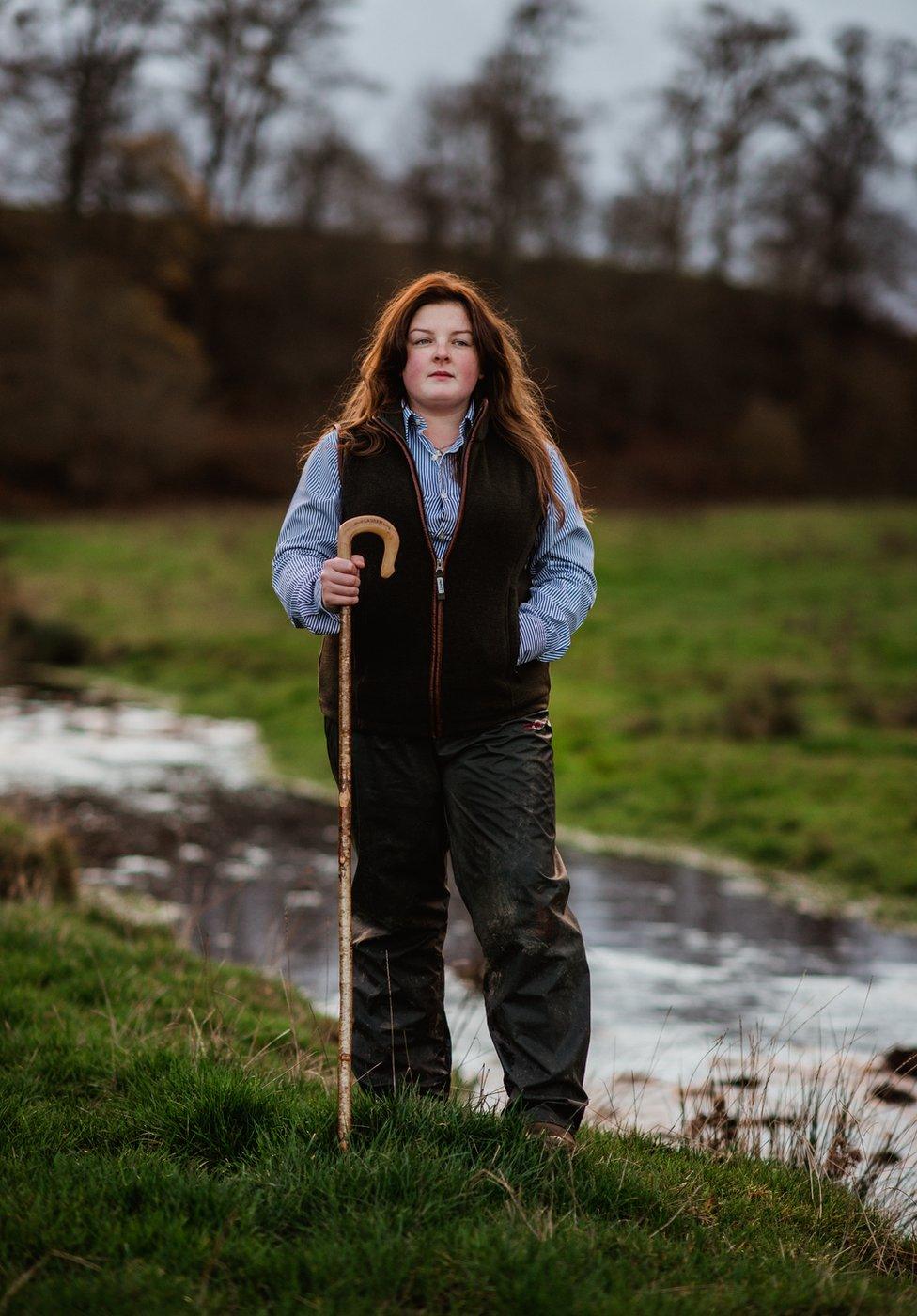
Lauren, a contract shepherdess, from Cornhill-on-Tweed in Northumberland, is among more than 40 women featuring in the exhibition
A collaboration with more than 40 women, Daughters of the Soil explores questions around land inheritance, farming stereotypes and the history of who has traditionally worked the land.
"The project offered the opportunity to chronicle the lives and stories of these women," explains Ms Coates.
"Women aren't as visible as men on farms but we are seeing them more.
"The female workforce are driving tractors, having a social-media presence and can be seen on TV, but they don't often inherit land or work in leadership positions."
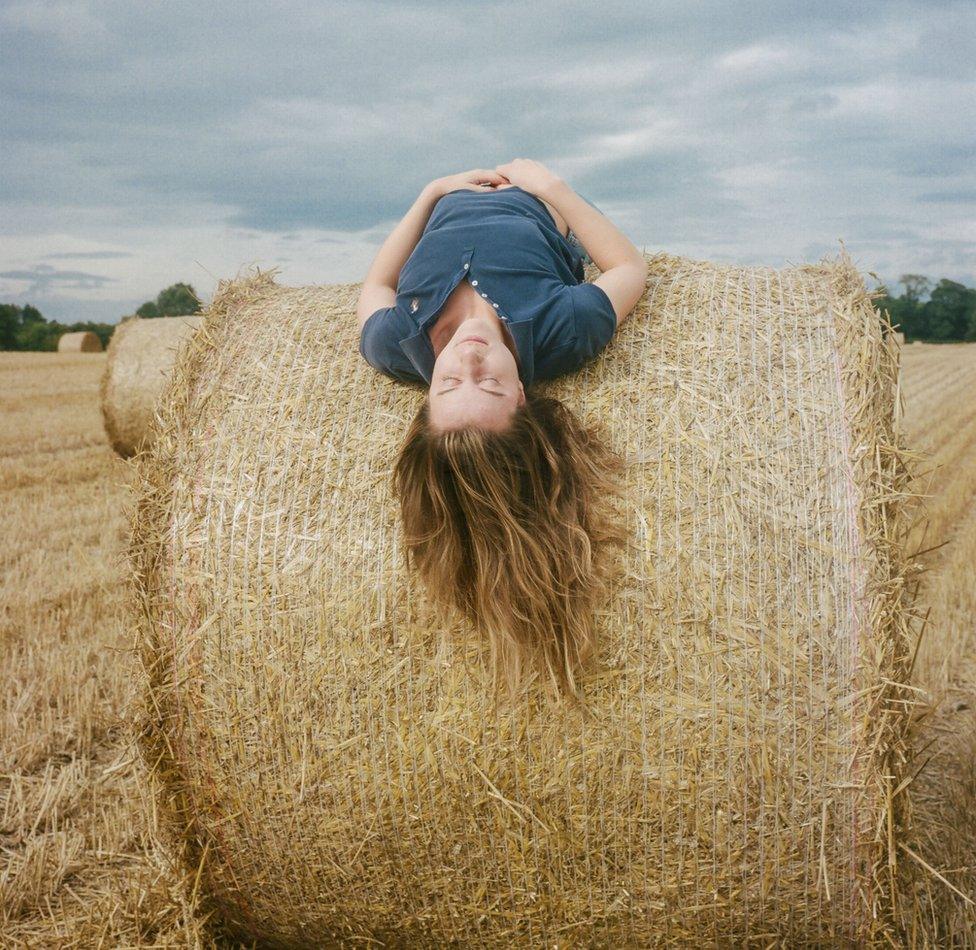
Poppy, a vet and farmer's daughter, drives the combine harvester at her home farm near Foulden, in the Scottish Borders
The photo exhibition is being displayed at The Gymnasium Gallery, external, in Berwick-upon-Tweed, until 5 June.

Farmer Samantha and husband Brian founded West Barn Pygmy Goats in 2011 and supply the animals to breeders across the country from their base near Morpeth, Northumberland

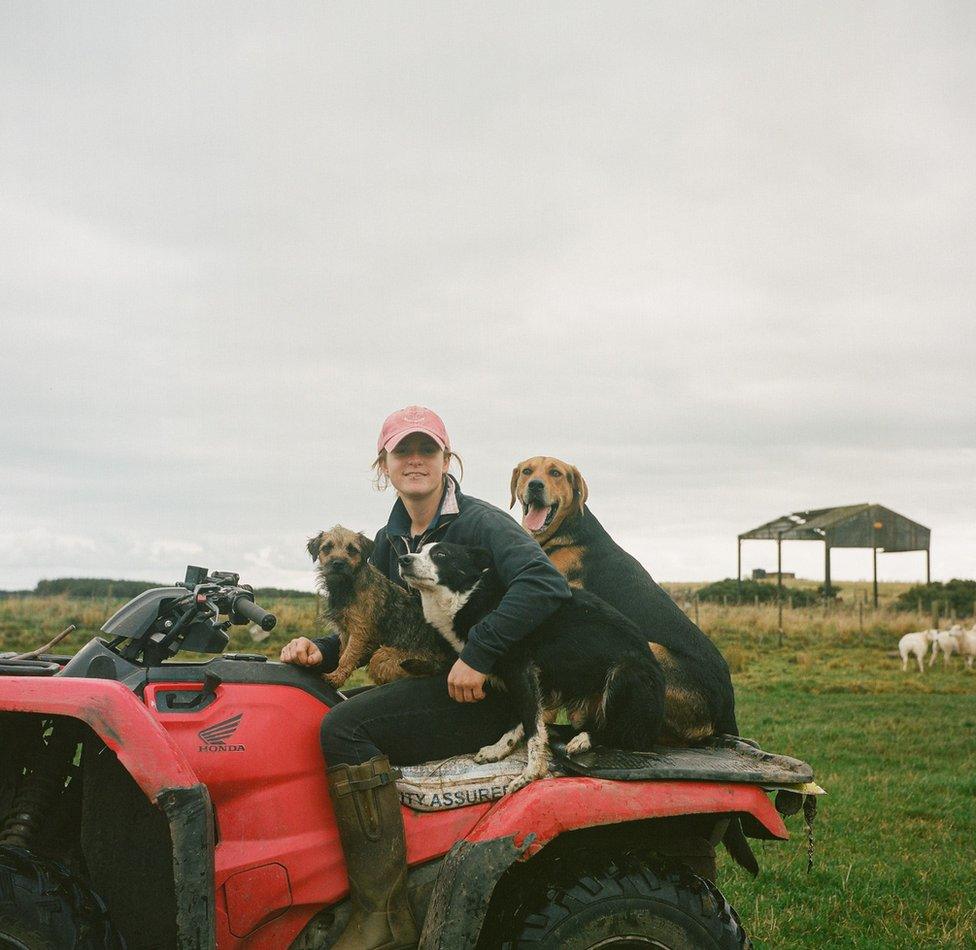
Shepherdess Hannah, with her three working dogs, near Chatton in Northumberland
Ms Coates visited 34 farms, drawing on her personal connection of having previously worked on one.
She still does occasional shifts milking cows in the northern Yorkshire Dales.

Debbie, a farmer's wife, leads diversification projects on their farm near Otterburn in Northumberland
While in residency with the Maltings and Newcastle University's Centre for Rural Economy (CRE) and Institute for Creative Arts Practice, Ms Coates worked with Prof Sally Shortall, whose research focuses on gender relations in agriculture.
According to Prof Shortall, women make up just 15% of the farming industry in the UK, their contributions often overlooked as they deal with barriers such as access to land, class, motherhood, and a lack of clear leadership roles.
Here are five of the farmers photographed and interviewed by Ms Coates.

Anna
The sign outside the farm run by Anna in north Northumberland still reads L Smales and Sons Ltd.
But it is Anna, her mother and sister who look after it.
She has worked there since she was a child, later leaving for university, earning a degree in organic farming and also working as an accountant.
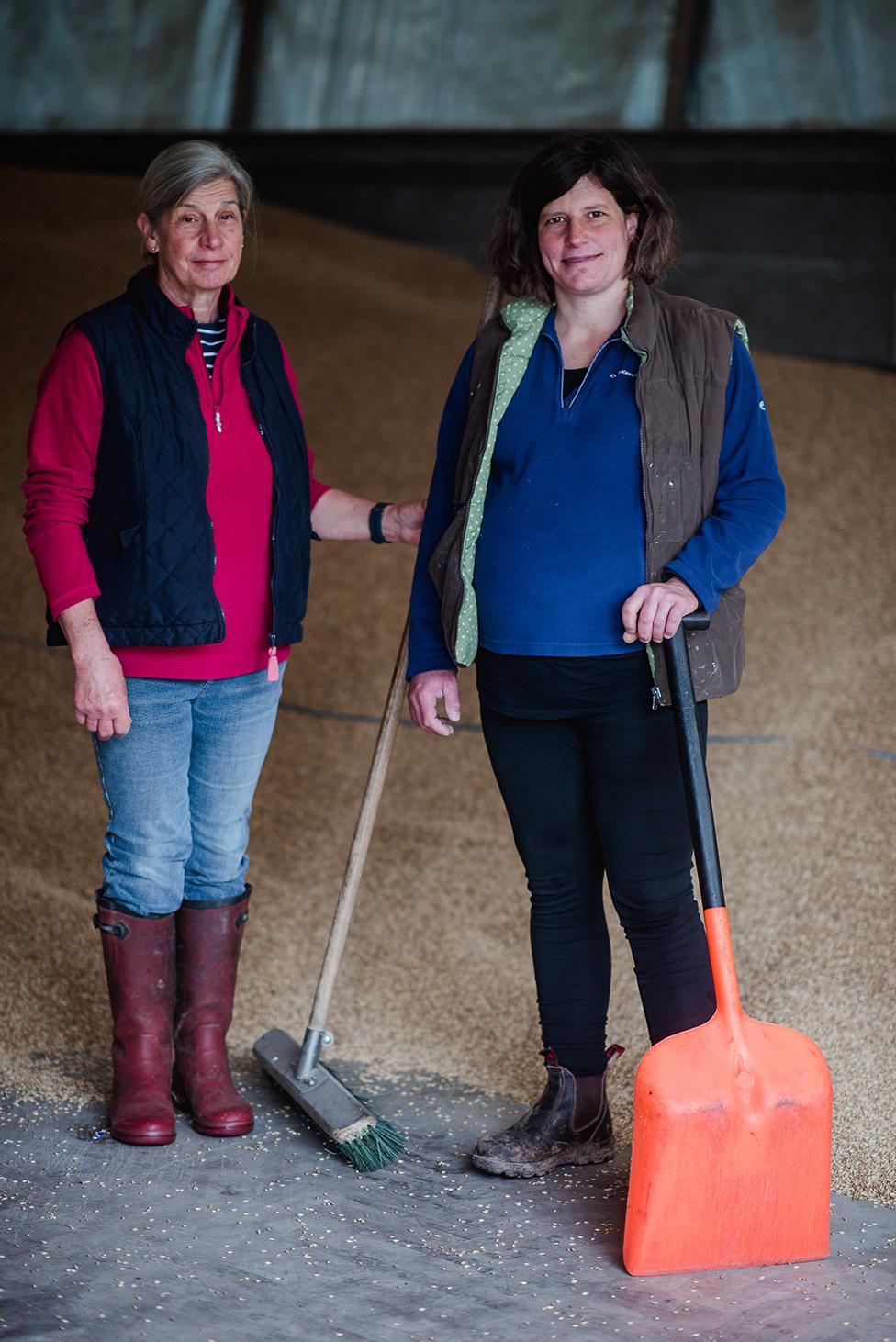
Anna was still working with her mother on the farm on the day she was due to give birth herself
"I really enjoyed growing up on the farm," she says. "I think it gave me opportunities other children or young people don't have.
"It was me who was always outside helping dad. I was managing the grains storage at age 12.
"It's not what I have done my whole career but it's what I always anticipated ending up doing."
The business switched to organic farming in 1998 and now produces organic wheat.
The family and the farm suffered a huge loss when Anna's father died 16 years ago, forcing them to step in and do what was needed to manage the land.
Ms Coates visited the farm on the day Anna was due to give birth to her second child, while she was still working on the farm.
They met again nine months later, after Rosie had been born and was accompanying her mum on farm duties.
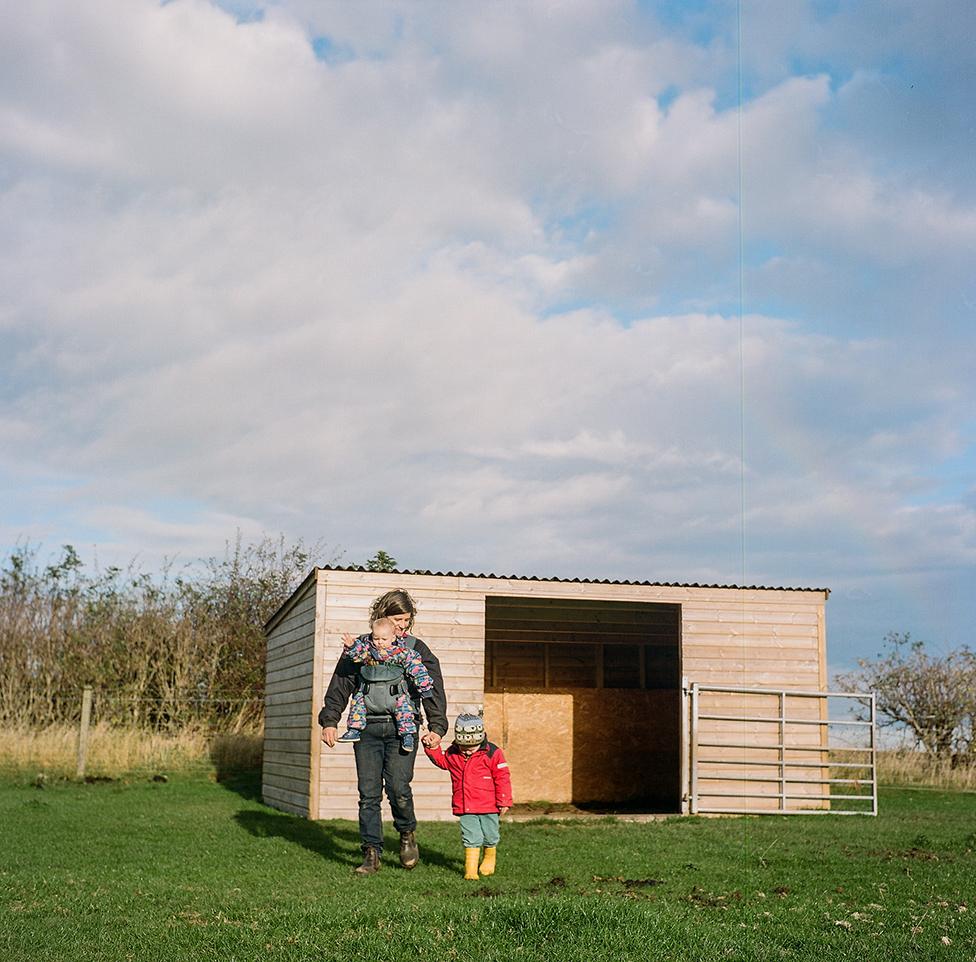

Annabel
Annabel, 31, an arable and beef farmer, works on her family's farm in the Scottish Borders, managing 2,500 acres along the Berwickshire coast with her father, Will.
She also runs St Abbs Pumpkin Patch.
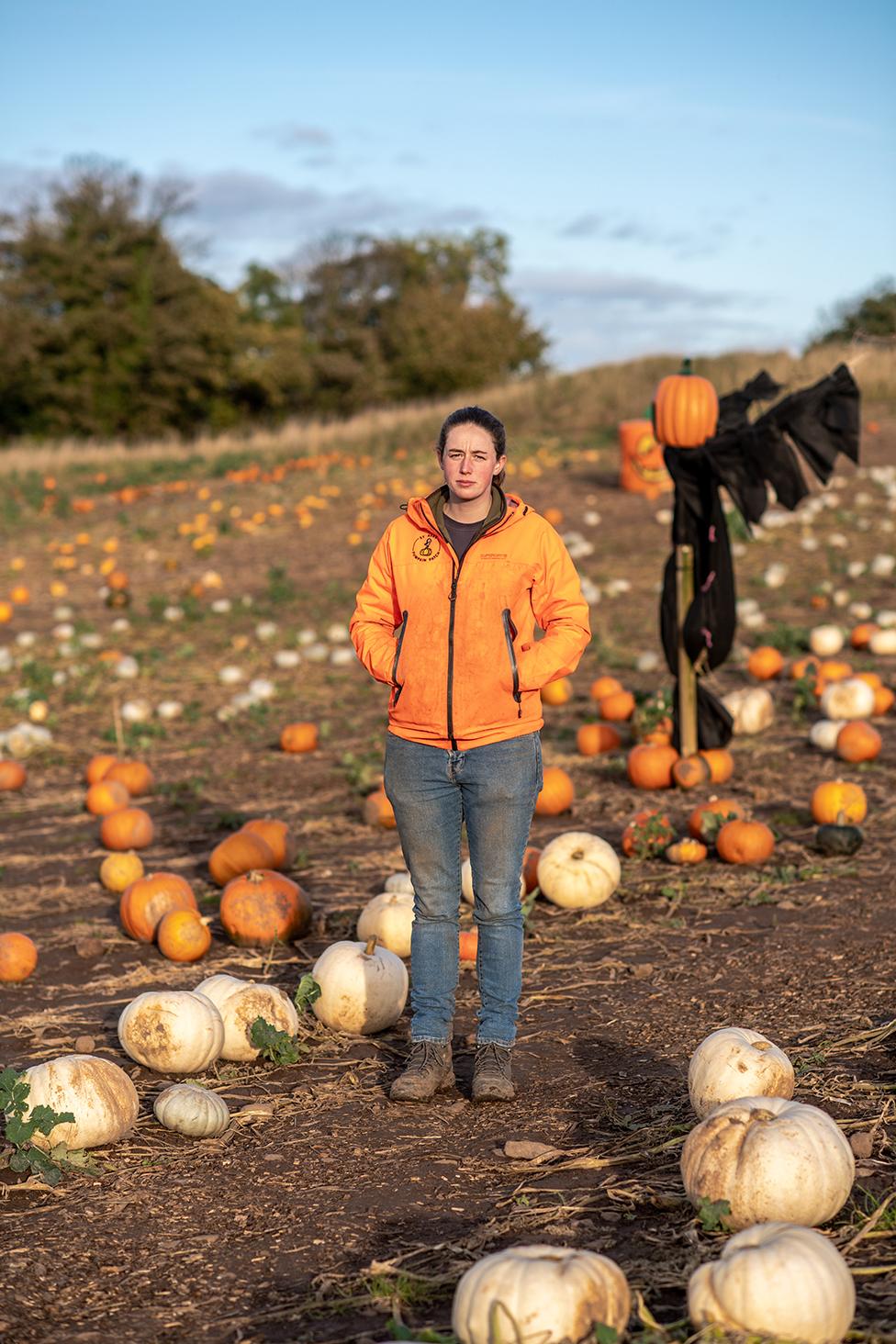
Annabel studied geology and gained experience of farm management while working on other farms in Lincolnshire and Northumberland.
She is a strong advocate of women and young people in farming.
"A mix of males and females in the workplace creates a good balance, and this produces beneficial results," she says.
"With the shortage of labour becoming a major challenge in UK agriculture, it has never been more important to encourage all young people into the industry.
"There are more and more women taking on agricultural roles within many different businesses. This is exciting and a step in the right direction."

Paula
Paula works at Mill Pond Flower Farm in Foulden village in the Scottish Borders.
Flower farming is one of the exceptions in the industry because the majority of farmers are female.
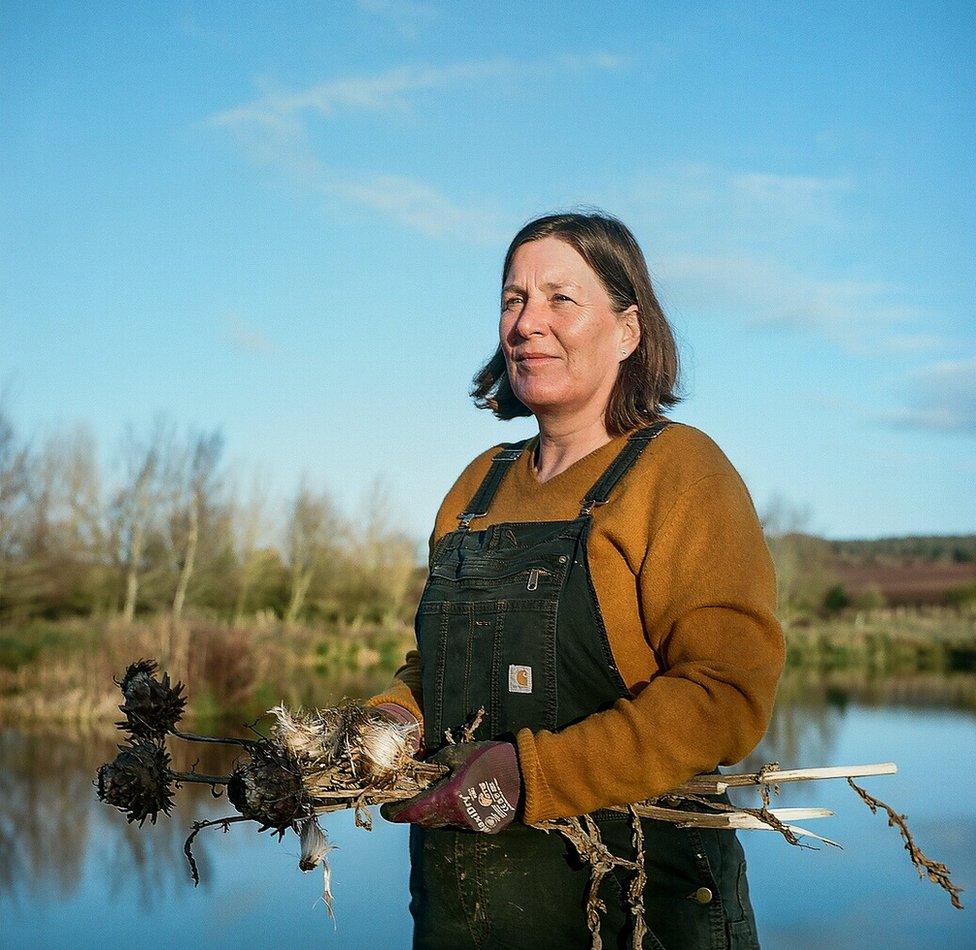
Paula didn't start out farming. She comes from a city, not an agriculture background.
But 10 years ago, she and her husband, Ray, took a gamble on something new. They had to learn flower farming skills from scratch and now run an established flower farm.

"Being a woman in farming is doing what I'm good at - using all my skills and making a living from the earth," she says.
"It's important different people get to farm because we need diversity to make our growing systems strong and resilient, to be able to adapt to change."
"Diversity in people, plants and wildlife is essential for us all to thrive."

Kirstie
Kirstie and her husband, Kevin, also farm in the Scottish borders, where they have a flock of Cheviot sheep.
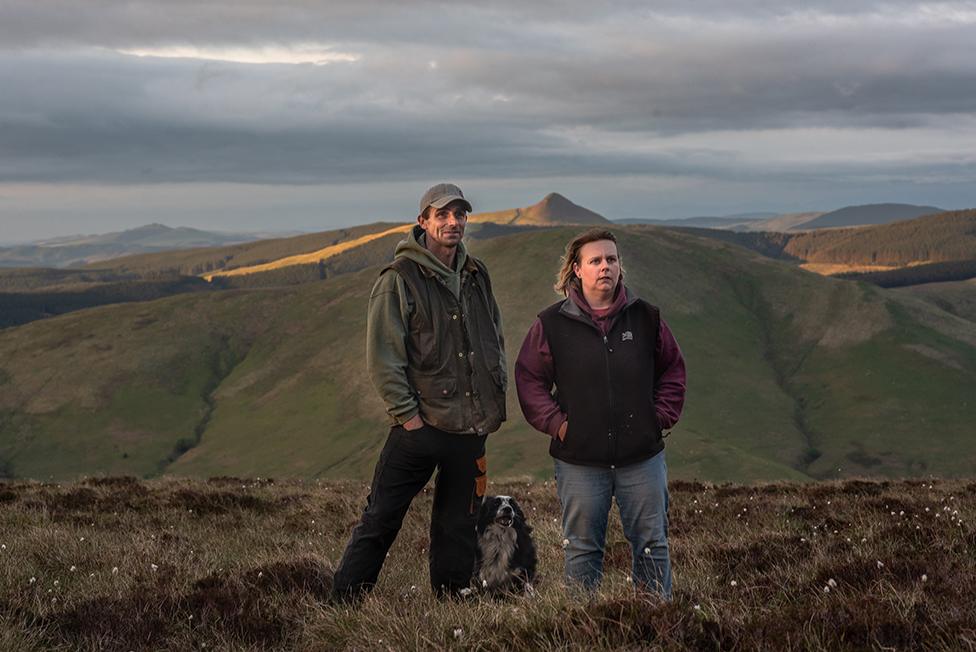
Kirstie and husband Kevin farm on the Cheviot Hills where Kirstie grew up
They farm on rented land, meaning they can't plan ahead for the future.
They are working towards owning their own farm, but land access remains one of the main barriers to working in agriculture.
Kirstie's father was a farm manager in the Scottish Borders and she grew up getting stuck in and helping him.
"You could tell when it was lambing time because I wasn't in school," she says.
"Where were you last week? Oh it was lambing time."
Her husband is a shepherd and is often away, meaning Kirstie has to be there for any emergencies.

"Between us it's a 50-50 decision. Fifty-fifty in the money so it should be 50-50 in the decisions," she says.


Fransje
As a teenager, Fransje worked milking cows in Holland, where she met her husband, Peter, a cheesemaker.
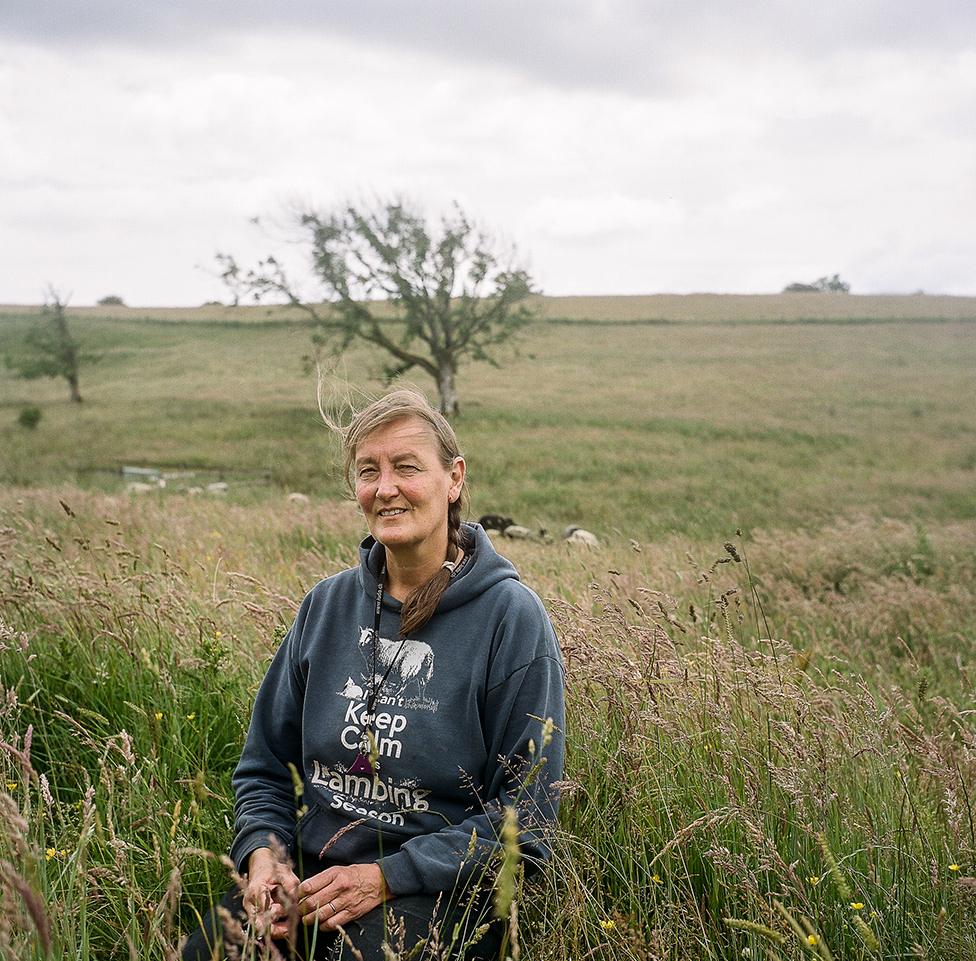
For most of her life she worked as an occupational therapist.
After moving to the UK, Fransje helped out with lambing at farms near where she lived in Northumberland.
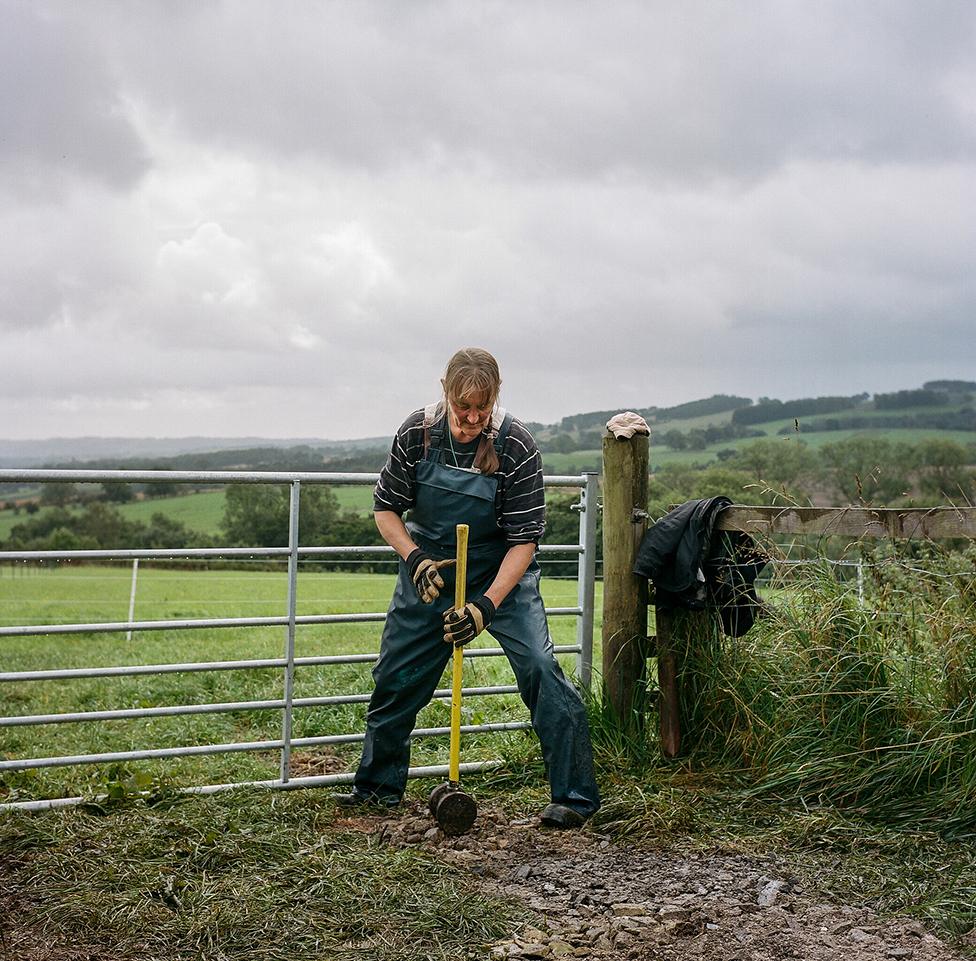
When the chance arose to own a small plot of land close to their home, Peter and Fransje assembled their own herd of Shetland sheep.
Fransje learned how to shear and sells the fleeces locally.
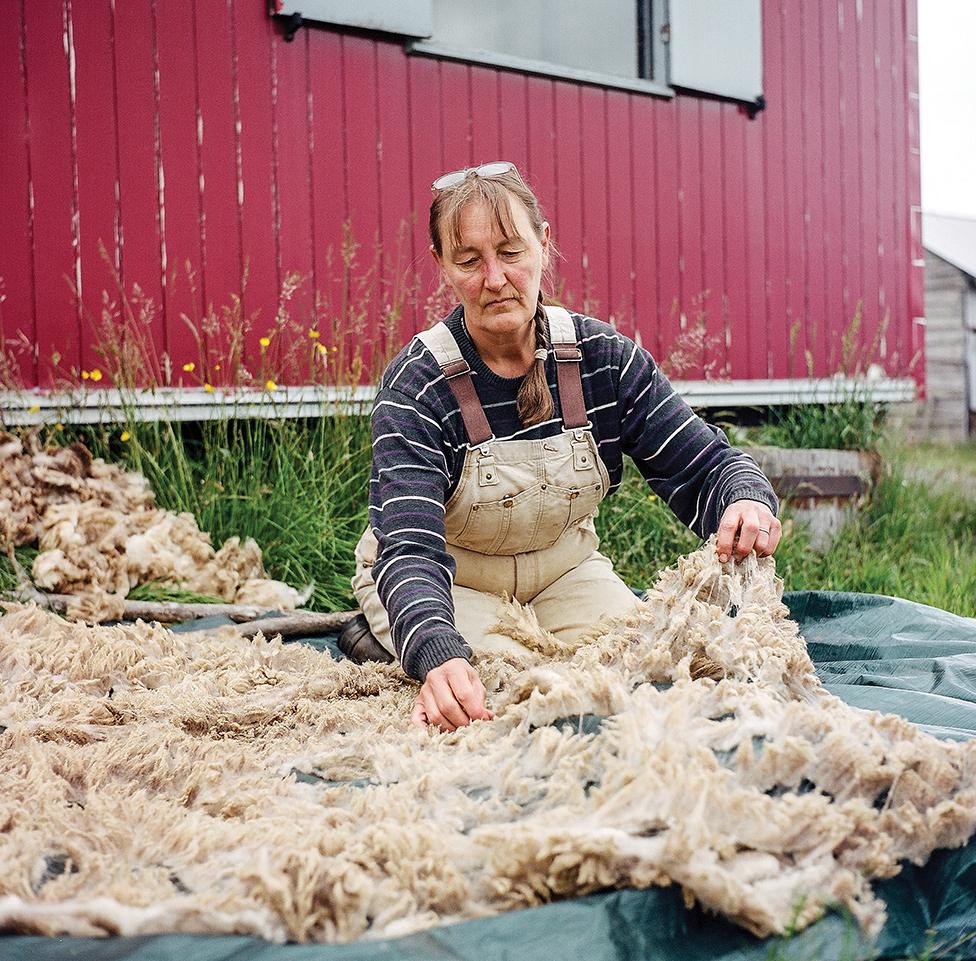
"Having both women and men farm adds diversity in the approach to animal and land management," she says.
"Personally, to be a woman who farms, gives a purpose to my natural drive to nurture, whether that be animals, trees, water, grass, soil."
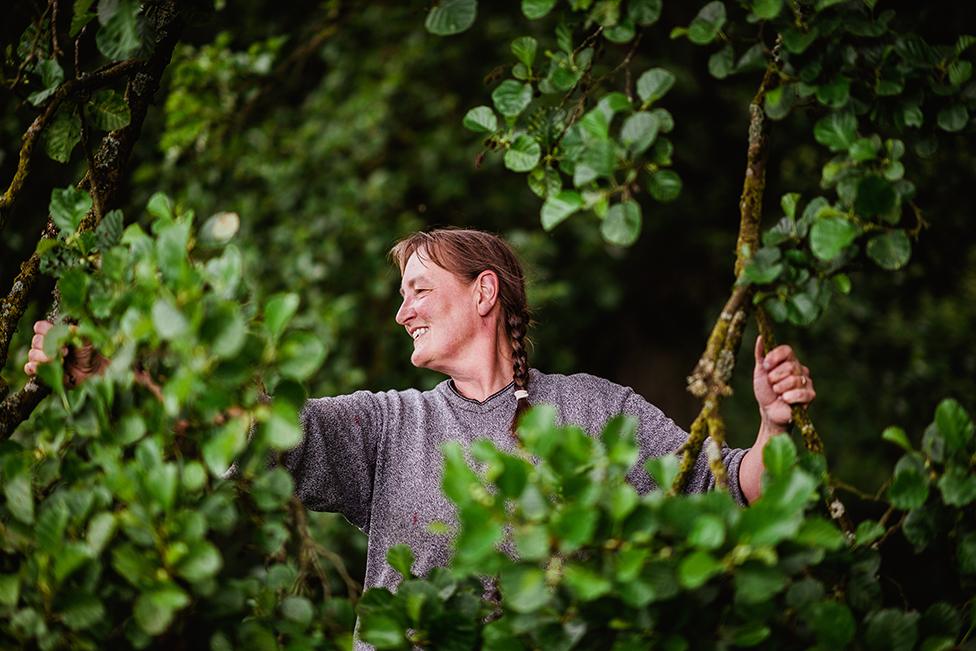
All pictures are subject to copyright.
Related topics
- Published21 August 2019
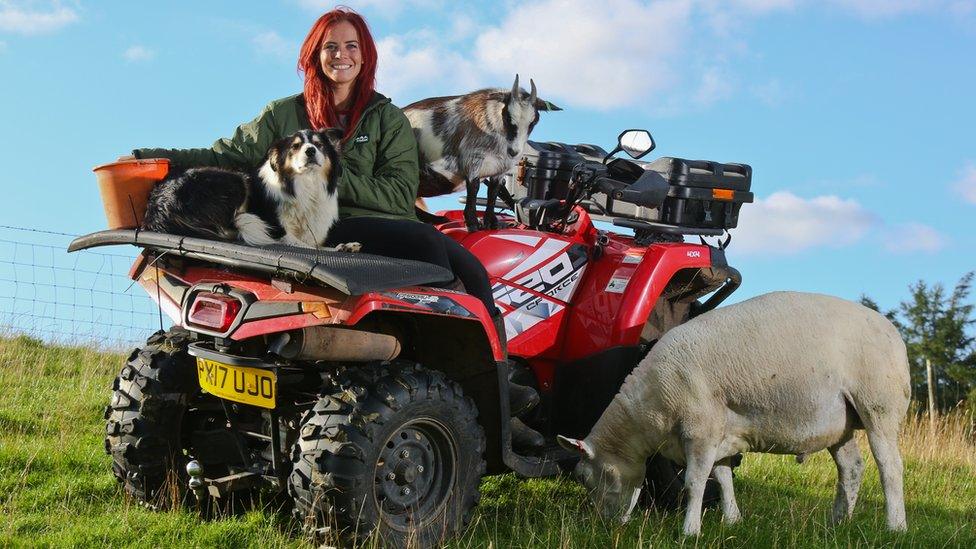
- Published15 November 2019

- Published6 February 2022
